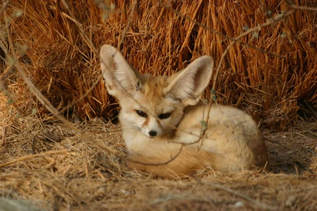
Nature – טבע
Israel is located between tropical zones that border the Mediterranean Sea in the west and the desert in the east. This diversity of landscapes is reflected in the equally diverse nature and wildlife found in the country. There are over 2,800 known plant species in Israel. The coastal plain with its Mediterranean climate hosts the largest concentration of plant life and is central to the nation’s citrus farming industry. Mount Carmel and Mount Meron house some indigenous forests while plant life in the desert region is scarce, however there are some pockets of subtropical species.
WildlifeThe diversity in wildlife is highlighted by the fact that animals from colder European regions coexist with species from the desert regions of Arabia and Egypt as well as animals of African origin and even some from the Indian subcontinent. There are approximately 104 mammal species and the most commonly spotted are the Nubian Ibex (a desert dwelling goat species), the hyrax (a small mammal often mistaken for a rodent) and the gazelle. The Nubian ibex is often found around springs in the Negev and Judaean deserts and Israel is home to the largest population in the world. Hyraxes are found throughout the country, but popular spots include Ein Gedi Oasis near the Dead Sea and the mountains of the north east. Gazelles are also found throughout the country except for the central coastal region which is heavily populated.
Israel is a bottleneck for many bird migration paths because of its proximity to three continents. As such, over 530 species of birds live or pass through Israel annually. In autumn, more than 500 million birds travel from Europe to Asia and Africa for the bi-annual migration, this happens again in the spring. Conservation programmes have been established to build major bird watching centres in Ein Gedi and Sde Boker.
In addition to mammals and birds are approximately 100 reptile species, almost a third of which live in the northern part of the country. The number of amphibian species has decreased over the years due to the destruction of habitats by drying various swamps and wetlands. Over 1,700 fish species can be found in and around Israel, over 410 in the Mediterranean and over 1,200 in the Red Sea. The remaining species are either cultivated or exist in freshwater. The coast of the Red Sea is particularly rich with tropical fish and coral.
Israel’s wildlife has been threatened due to rapid urbanisation as well as overforestation that destroys habitats. In response, Israel’s Nature and National Parks Protection Authority was created to protect wildlife and to fight extinction. There are 115 national parks and 380 nature reserves devoted to protecting important regions and habitats. The Society for the Protection of Nature in Israel was established in 1953 and has worked tirelessly ever since to educate the population about the importance of nature conservation. They operate 26 field study centres, 40 branch and community centres as well as youth clubs and teacher training programs. Their many campaigns have resulted in important conservation success stories throughout Israel.
Israel is located between tropical zones that border the Mediterranean Sea in the west and the desert in the east. This diversity of landscapes is reflected in the equally diverse nature and wildlife found in the country. There are over 2,800 known plant species in Israel. The coastal plain with its Mediterranean climate hosts the largest concentration of plant life and is central to the nation’s citrus farming industry. Mount Carmel and Mount Meron house some indigenous forests while plant life in the desert region is scarce, however there are some pockets of subtropical species.
WildlifeThe diversity in wildlife is highlighted by the fact that animals from colder European regions coexist with species from the desert regions of Arabia and Egypt as well as animals of African origin and even some from the Indian subcontinent. There are approximately 104 mammal species and the most commonly spotted are the Nubian Ibex (a desert dwelling goat species), the hyrax (a small mammal often mistaken for a rodent) and the gazelle. The Nubian ibex is often found around springs in the Negev and Judaean deserts and Israel is home to the largest population in the world. Hyraxes are found throughout the country, but popular spots include Ein Gedi Oasis near the Dead Sea and the mountains of the north east. Gazelles are also found throughout the country except for the central coastal region which is heavily populated.
Israel is a bottleneck for many bird migration paths because of its proximity to three continents. As such, over 530 species of birds live or pass through Israel annually. In autumn, more than 500 million birds travel from Europe to Asia and Africa for the bi-annual migration, this happens again in the spring. Conservation programmes have been established to build major bird watching centres in Ein Gedi and Sde Boker.
In addition to mammals and birds are approximately 100 reptile species, almost a third of which live in the northern part of the country. The number of amphibian species has decreased over the years due to the destruction of habitats by drying various swamps and wetlands. Over 1,700 fish species can be found in and around Israel, over 410 in the Mediterranean and over 1,200 in the Red Sea. The remaining species are either cultivated or exist in freshwater. The coast of the Red Sea is particularly rich with tropical fish and coral.
Israel’s wildlife has been threatened due to rapid urbanisation as well as overforestation that destroys habitats. In response, Israel’s Nature and National Parks Protection Authority was created to protect wildlife and to fight extinction. There are 115 national parks and 380 nature reserves devoted to protecting important regions and habitats. The Society for the Protection of Nature in Israel was established in 1953 and has worked tirelessly ever since to educate the population about the importance of nature conservation. They operate 26 field study centres, 40 branch and community centres as well as youth clubs and teacher training programs. Their many campaigns have resulted in important conservation success stories throughout Israel.


